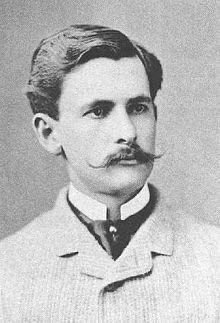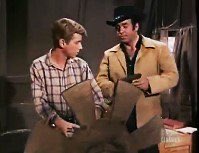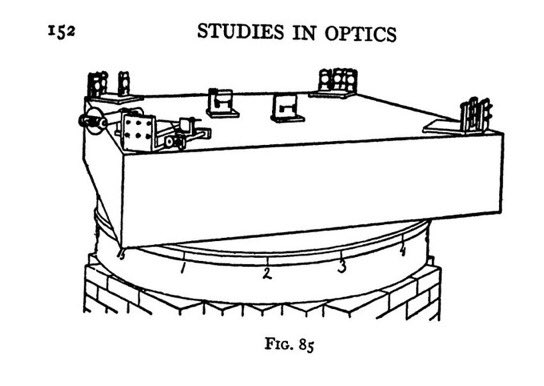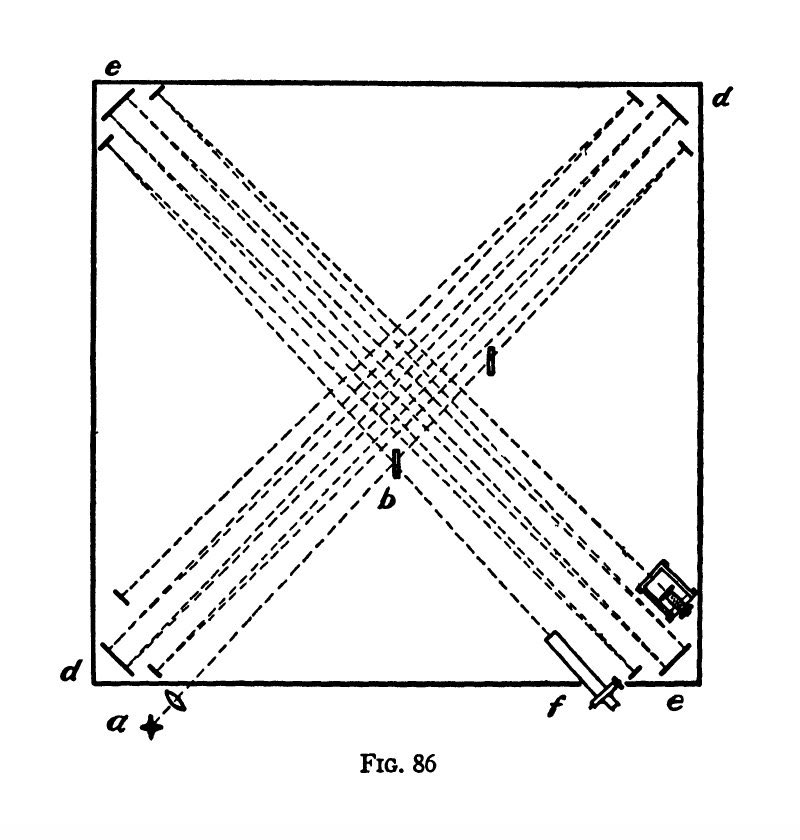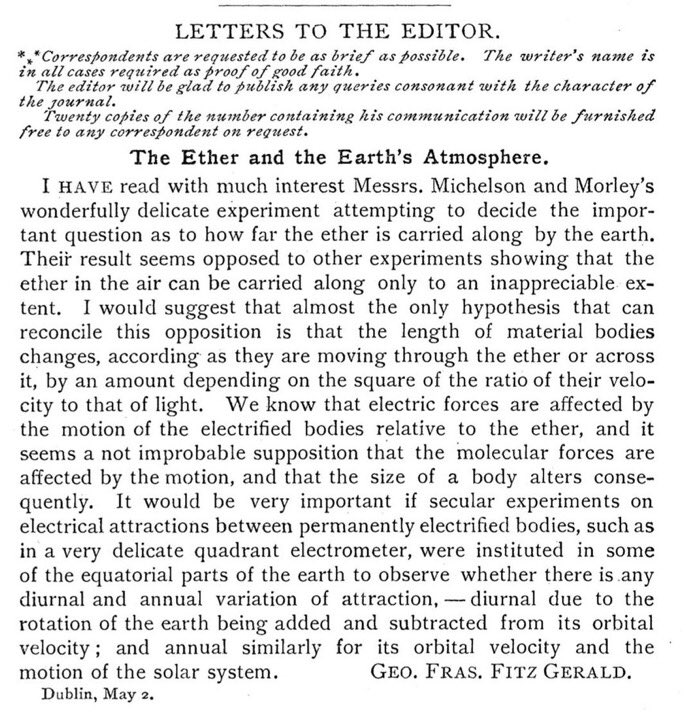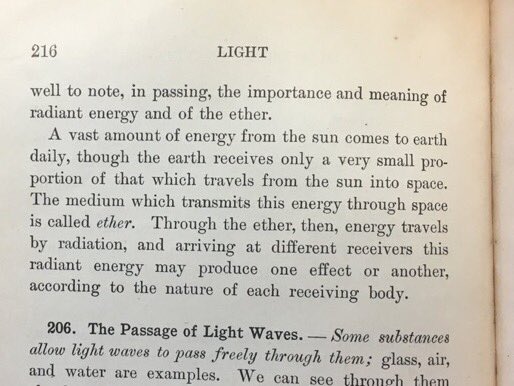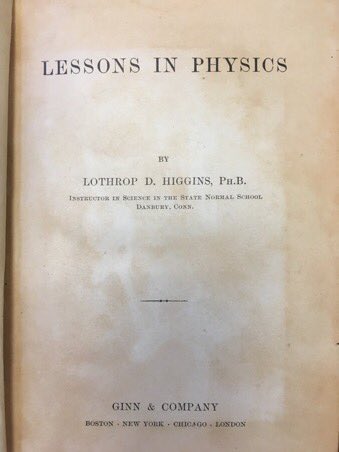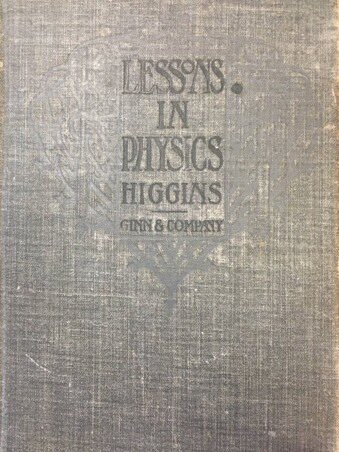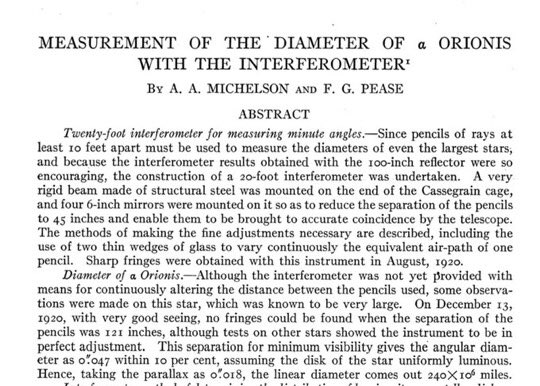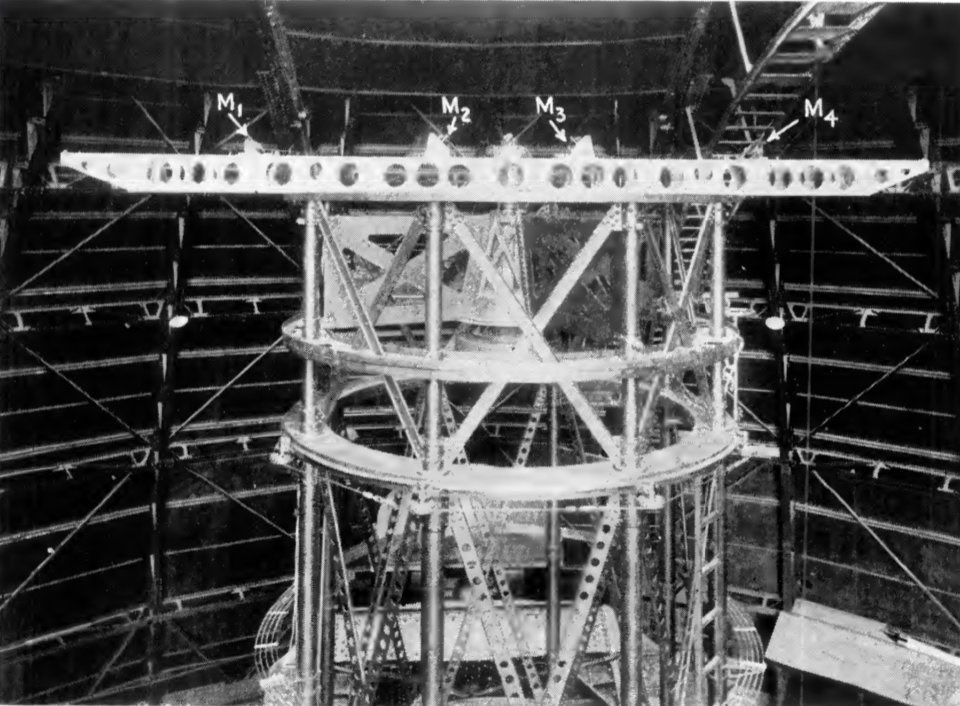Albert Michelson, pioneer of optical interferometry, was born #OTD in 1852. He refined measurements of the speed of light, failed to find evidence of the aether, and developed a method that now underlies gravitational wave detection.
Photo: “Practical Physics,” Millikan & Gale
Photo: “Practical Physics,” Millikan & Gale
Michelson was born in Prussia, but moved to the US at a young age. He grew up in little mining towns across California and Nevada.
In Nevada they lived in Virginia City, also the setting for the TV show “Bonanza.” In the episode “Look to the Stars,” a young Michelson performs various experiments and measures the speed of light. The plot involves the Cartwrights helping him get into the US Naval Academy.
While in the Navy, he repeated Foucault's experiment to determine the speed of light. His result was more accurate than the value I use in my intro physics class. By 1883 he had measured 299,853 ± 60 km/s. The lower end of that error bar grazes the actual value of 299,792 km/s.
Michelson is best known for the experiment he performed with Edward Morley, attempting to detect Earth’s motion through a luminiferous aether. This experiment is the basis for modern optical interferometry and its basic methods are used by @LIGO to detect gravitational waves.
In 1865, James Clerk Maxwell published "A Dynamical Theory of the Electromagnetic Field," which showed that electromagnetic waves propagate with a velocity close to the known speed of light. He concluded that light must be an electromagnetic wave.
Maxwell and everyone else assumed that electromagnetic waves, like all other waves known at the time, required a medium: the luminiferous aether. Maxwell's equations would only be valid in the rest frame of this aether.
Of course, no one could come up with an experiment that directly sampled the aether. You couldn't bottle it, or isolate it in a lab, or explain why planets didn't slow down from the drag as they sloshed through it. But it must be there! After all, waves require a medium. Right?
In 1881, Michelson began work on an indirect test. Motion relative to the aether should cause light to propagate at different speeds in the directions parallel and perpendicular to the motion.
So Michelson designed an interferometer that would send light down and back two perpendicular legs of identical length. If light traveled at different speeds along the two legs, an interference pattern would appear when they recombined.
The first experiment just wasn't sensitive enough to show anything conclusive. In 1885 Michelson began his collaboration with Morley, building a larger and more sensitive version of the 1881 interferometer. They performed their experiment over a period of a few months in 1887.
Here is Michelson's diagram of the apparatus (on a stone block floated on a pool of mercury) and the beam paths. Multiple reflections made the arms longer, increasing the effect they were looking for.
Figures: Michelson, "Studies in Optics," University of Chicago Press, 1927
Figures: Michelson, "Studies in Optics," University of Chicago Press, 1927
This effect depends on the ratio v/c, where v is the speed relative to the aether and c is the speed of light through the aether. Michelson and Morley took advantage of the largest v they had access to — the Earth moving at 30 km/s in its orbit around the sun.
If the direction of the Earth's motion through the aether was just right, they might get the same effect along both optical paths. To rule that out they performed the experiment multiple times throughout the year. The direction of Earth's velocity would be different each time.
To make a long story short, they didn't see what they expected to see. If there was an aether, then their experiment should have shown a time difference along the two legs. But no matter how they looked, it simply wasn't there. The most famous "null result" in all of physics!
No one knew what to make of this. George Fitzgerald was the first to propose that maybe objects got shorter in the direction parallel to the motion through the aether, and that would explain why light took the same time to travel both paths.
Ref: http://science.sciencemag.org/content/ns-13/328/390.1
Ref: http://science.sciencemag.org/content/ns-13/328/390.1
That makes a sort of sense. Maybe plowing through the aether would buffet an object and compress it somehow? Hendrik Lorentz took this idea even further, but was still trying to reconcile the null observations with the existence of an aether.
https://twitter.com/mcnees/status/887341021054607360?s=21 https://twitter.com/mcnees/status/887341021054607360
https://twitter.com/mcnees/status/887341021054607360?s=21 https://twitter.com/mcnees/status/887341021054607360
Michelson and Morley knew what they were looking for and how to measure it, it just wasn’t there. But faced with this null result, which Michelson and Morley continued to refine, physicists still clung to the idea of an aether.
Here is a page from "Lessons in Physics," a textbook written by Lothrop Higgins in 1903 – over 15 years after the Michelson-Morley experiment! – that presents the ether as a matter-of-fact.
Finally, in 1905, Einstein took Michelson and Morley's null result completely seriously. He asserted that Maxwell's Equations are fundamental laws that hold in all inertial reference frames, and hence there is no need for a special "rest frame" for electrodynamics.
"The introduction of a “luminiferous ether” will prove to be superfluous inasmuch as the view here to be developed will not require an “absolutely stationary space” provided with special properties..."
Einstein, "On the Electrodynamics of Moving Bodies" (1905)
Einstein, "On the Electrodynamics of Moving Bodies" (1905)
So Michelson's interferometry work, culminating in his "failed experiment" with Morley, was an essential step in Einstein’s discovery of special relativity.
But it was also central to a recent and remarkable direct test of *general* relativity! The interferometers used by @LIGO to detect gravitational waves, while differing in size and sophistication, use the same principles as Michelson's original design. https://www.ligo.caltech.edu/page/ligos-ifo
The "Michelson Interferometer," as it is now known, is used throughout optics.
Michelson also designed a "stellar interferometer," which he and Francis Pease used in 1920 to measure the diameter of Betelgeuse. They quoted a result of about 240 million miles, "or slightly less than that of the orbit of Mars."
Reference/pdf: http://adsabs.harvard.edu/abs/1921ApJ....53..249
Reference/pdf: http://adsabs.harvard.edu/abs/1921ApJ....53..249

 Read on Twitter
Read on Twitter